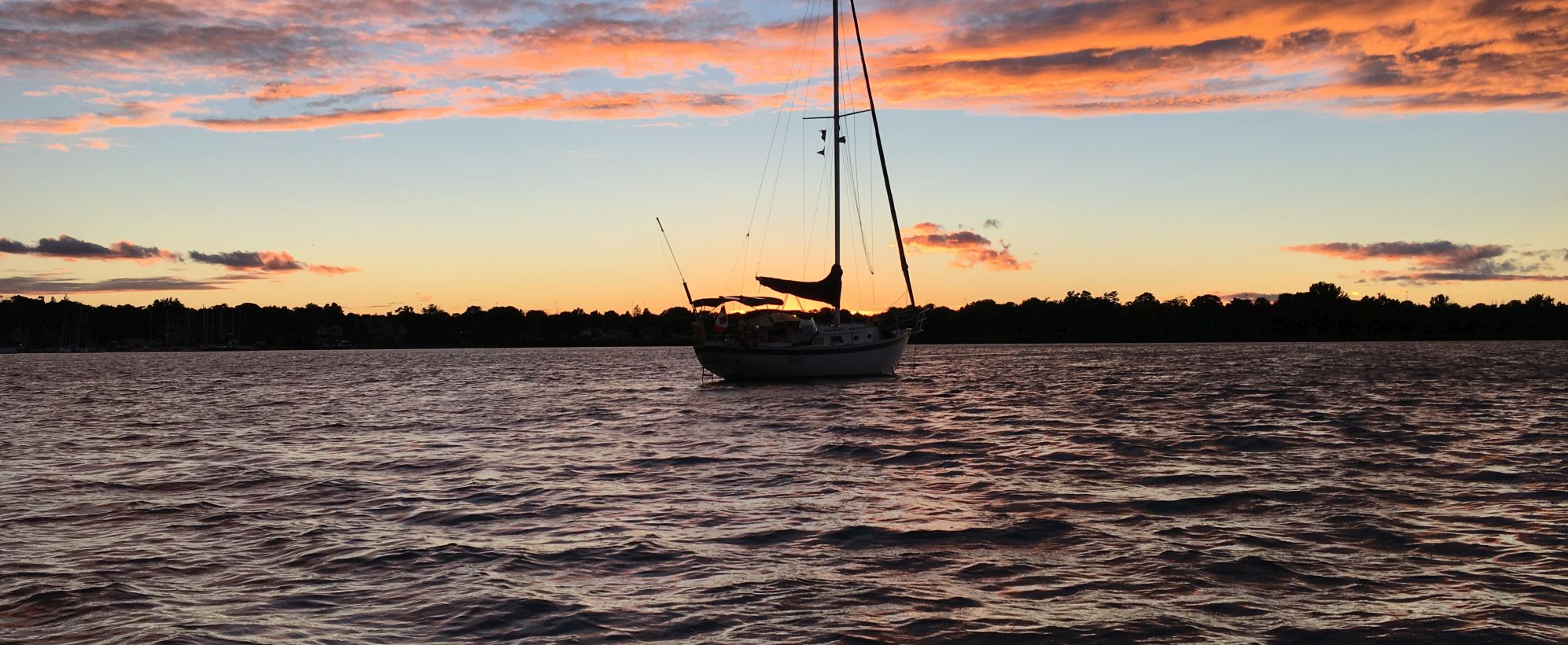When we bought our boat there was up to a 1/4″ play in the rudder post. After the rudder was dropped (with much effort!) we found the quadrant needed to be replaced as every bolt had to be drilled to be removed. We found some of the bolts were raw steel through aluminum and stainless steel, corrosion was an issue. An even bigger find was that there were no bearings in the fiberglass rudder tube. The rudder’s stainless steel post was worn at its base, equally worn in the fiberglass rudder tube.
Well here is an update of what we did. To summarize, the rudder was dropped and the wear inspected and measured. The quadrant was destroyed and had to be ordered new. The top nylon bushing was in fine shape but the aluminum spacers were fused together and had to be cut apart.
What we elected to do was to build a new bottom bushing out of aluminum and epoxy a nylon sleeve over the damage on the rudder post. The two new bottom bushings were machined to fit inside each other and provide a new wearing surface for the rudder.Here is what we did:
- Measure the diameters of the rudder tube and the rudder stock in two directions for wear, draw up new bushings to be machined, select a machine shop. I had the bottom bushings done plus the two upper aluminum spacers with the pin and check screw for $230.
- Prepare the bottom of the rudder tube for the new bushing. The diameter of the new bushing will be larger then the existing rudder tube. We used a hole-saw to increase the tube size. First run a straight edge down the rudder tube from the cockpit deck to review the angle that the new hole needs to be drilled. Cut a tapered plug from plywood and insert in the existing tube to help guide the hole saw at first. Two people will need to guide the drill in order to keep the correct angle.
- Clean the rudder stock and sweat the nylon bushing down the rudder stock to the damage. Apply the epoxy over the damage and continue sliding the nylon bushing down to its final position.
- Dry run the fit. (We had to assemble the rudder 5 times before it was right). Insert the new aluminum bushing, friction should hold it in place. Next insert the rudder. We used a 2×8 as a lever once the two of us got it in place. This allows one person to guide it in on top. Check alignment and fit. Sand as needed. I wanted it to ride with the least amount of effort, but not be loose.
- Once happy with the fit we screwed the aluminum bushing in place and inserted the rudder for the final time and then assembled the quadrant.
Some extra notes:
- You have to dig a 1.5 foot hole under the rudder to let it drop.
- I removed the wood bulkheads into the space under the cockpit to allow more working space. We also removed the fuel tank for cleaning, but that’s another project.
- The rudder was full of water which I drained and then patched the crack at the top of the rudder.
Written by Chris Davison


